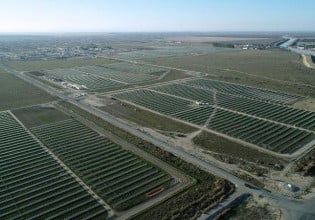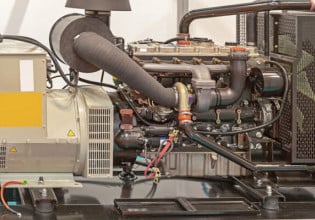The Electric Power Research Institute (EPRI) has developed and released a methodology that can be used with existing software and planning tools to determine ways to reinforce distribution systems that face increased deployment of distributed energy resources (DER) such as rooftop solar, microgrids, and energy storage. Grid operators face significant challenges to system reliability and operation as larger numbers of diverse, distributed resources come online. The best known example is rooftop solar installations, which are characterized by relatively small size, intermittent power production, widely dispersed deployment in the grid, and the inability of grid operators to monitor and control them.
This creates a much more dynamic grid with respect to load, voltage and other parameters, and drives the need to reinforce key parts of the grid to better handle the new hardware and operating characteristics. For utilities and regulators, important technical questions have emerged regarding the best steps and highest priorities in reinforcing the grid.
"The unique challenge for distribution systems is the number of interconnections,†said EPRI Vice President of Power Delivery and Utilization Mark McGranaghan. “This requires analysis techniques that can capture the voltage, circuit protection, and thermal impacts resulting from a growing deployment of distributed resources."
EPRI’s new streamlined hosting capacity methodology is being offered to make such analyses much faster and more efficient. “It is built on many years of research monitoring, simulating, and analyzing the impacts of distributed resources on distribution systems,†said EPRI Project Manager Jeff Smith. “We worked with 14 utilities in analyzing a wide range of PV deployment scenarios across three dozen distribution systems. Rather than relying on broad assumptions we derived this streamlined method to capture the key impacts in an efficient manner, allowing us to reduce the time to analyze a feeder from weeks down to less than 10 minutes.†Smith added that the analysis methodology can help ease the near-term burden on planning engineers, but will also indicate where more detailed studies may be necessary.
EPRI first began applying the method earlier this year working with the Tennessee Valley Authority, or TVA. TVA began a project in 2014 to determine the costs and benefits of integrating solar across its service territory, and engaged EPRI to perform the distribution analysis portion of the project working with the local distribution companies.
"TVA and the 155 local power company customers that it serves felt it was important to understand how higher penetrations of distributed generation would impact their distribution systems and planning efforts,†said TVA Vice President of Stakeholder Relations Joe Hoagland. "We engaged EPRI to apply their streamlined methods in the Tennessee Valley to further the learning, enabling the efficient analysis of hundreds and thousands of distribution feeders." This has the potential to allow our customers’ distribution planners to quickly and accurately assess their own unique systems as distributed generation becomes more impactful at their locations." EPRI is also working with utilities and their planning tools such as CYME, Milsoft, and Synergi to support the use of its methodology with existing utility databases and software.






